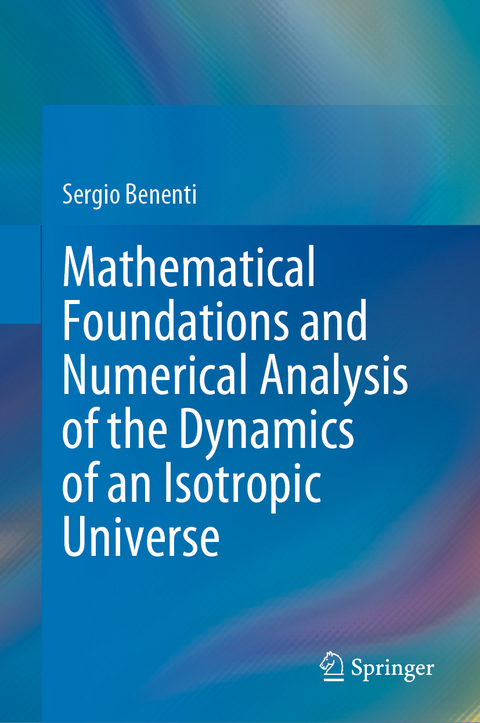
Mathematical Foundations and Numerical Analysis of the Dynamics of an Isotropic Universe
Springer International Publishing (Verlag)
9783031640322 (ISBN)
This book is an enhanced and expanded English edition of the treatise "Fondamenti matematici e analisi numerica della dinamica di un Universo isotropo," published by the Accademia delle Scienze di Torino in volume no. 42-43, 2018-2019. The book summarizes some of the principal findings from a long-term cosmology research project, aiming to clarify significant results through clear mathematical postulates. Despite efforts, a single mathematical model accurately describing the universe's evolution remains elusive due to early universe complexity and numerous observational parameters. Over the past century, various models have been proposed and discarded, illustrated by debates on the cosmological constant and spatial curvature assumptions. Currently, many models lack clear foundations, causing confusion in the field. Standard cosmological approaches rely on principles like Weyl's principle, homogeneity, and isotropy, but may overlook discerning purely geometrical properties from those dependent on field equations. This book aims to bring order to cosmology by starting from understandable mathematical postulates, leading to theorems. Disagreements on postulates can prompt adjustments or alternative approaches. Physics often consists of deductive theories lacking explicit delineation of underlying concepts and postulates, a criticism relevant to cosmological theories. Despite a late 1990s consensus on the Lambda cold dark matter model, the absence of a logical-deductive structure in literature complicates understanding, leading some to humorously dub it the "expanding Universe and expanding confusion."
Sergio Benenti graduated in mathematics with honors in 1968. A year later, he became a permanent assistant in Rational Mechanics. His research has primarily focused on three distinct fields. Firstly, he tackled the separation of variables of the Hamilton-Jacobi equation, solving the age-old problem posed by Levi-Civita geometrically. These results, known as Benenti systems, Benenti theorem, and Benenti tensor, have been widely accepted by researchers and have led to numerous publications. Secondly, he applied the theory of separation of variables to General Relativity, a methodology later utilized by Roger Penrose, the Nobel Prize winner for Physics in 2020. Thirdly, he explored nonlinear non-holonomic systems, providing a correct and general arrangement to the Gauss Principle. Additionally, he presented the first feasible example of a nonlinear non-holonomic system, a previously unknown area in the field. Lastly, he has been focusing on mathematical models of cosmology, which is their main area of research currently. In 1980, he was appointed chair of Rational Mechanics, and in 2021, he became a professor emeritus. He has been a member of the Turin Academy of Sciences since 1987.
1. Geometry of the cosmic space-time.- 2. Bridge-postulates.- 3. Relativistic cosmic dynamics.- 4. Numerical cosmology.- 5. Signal transmission and visibility.- 6. Cosmic redshift.- 7. Appendices.
| Erscheinungsdatum | 01.08.2024 |
|---|---|
| Zusatzinfo | XXI, 143 p. 63 illus., 56 illus. in color. |
| Verlagsort | Cham |
| Sprache | englisch |
| Original-Titel | Fondamenti matematici e analisi numerica della dinamica di un Universo isotropo |
| Maße | 155 x 235 mm |
| Themenwelt | Naturwissenschaften ► Physik / Astronomie ► Theoretische Physik |
| Schlagworte | age of the universe • Cosmological Data • Einstein's field equations • Einstein’s Field Equations • Geometry of Cosmic Space-time • Isotropic Cosmological Models • Mathematical models in isotropic cosmology • Matter-radiation Model • Spatial Curvature |
| ISBN-13 | 9783031640322 / 9783031640322 |
| Zustand | Neuware |
| Informationen gemäß Produktsicherheitsverordnung (GPSR) | |
| Haben Sie eine Frage zum Produkt? |
aus dem Bereich


